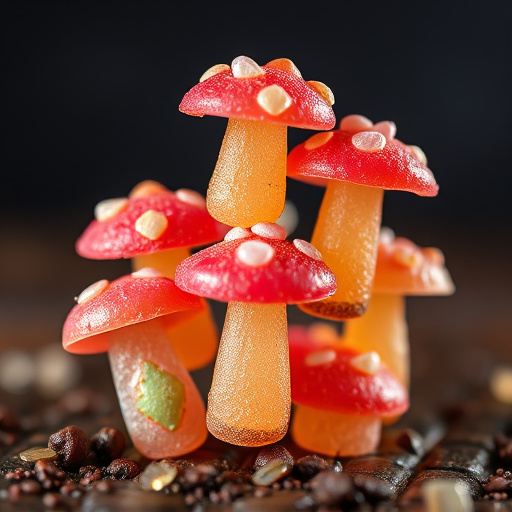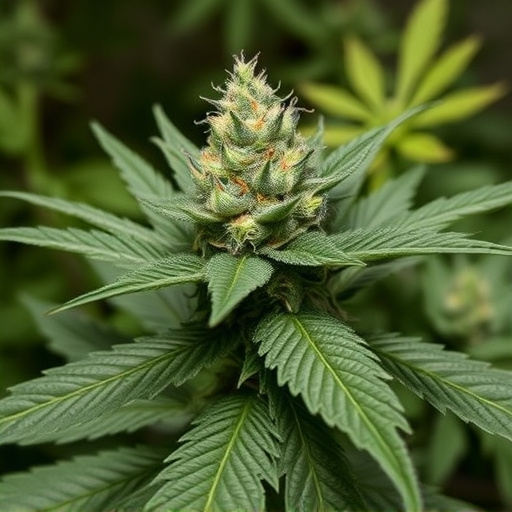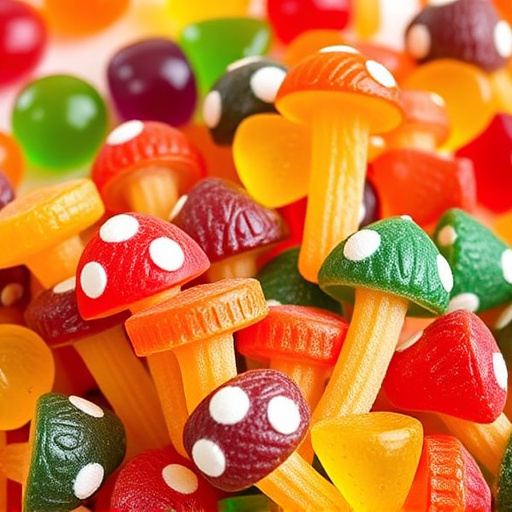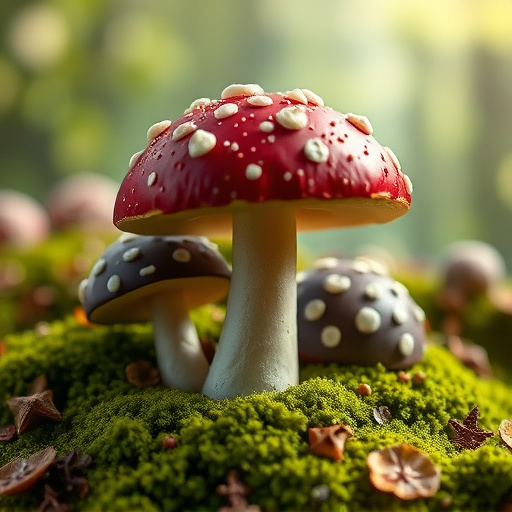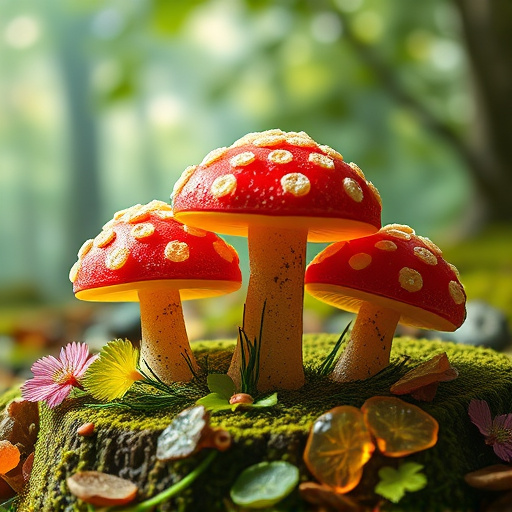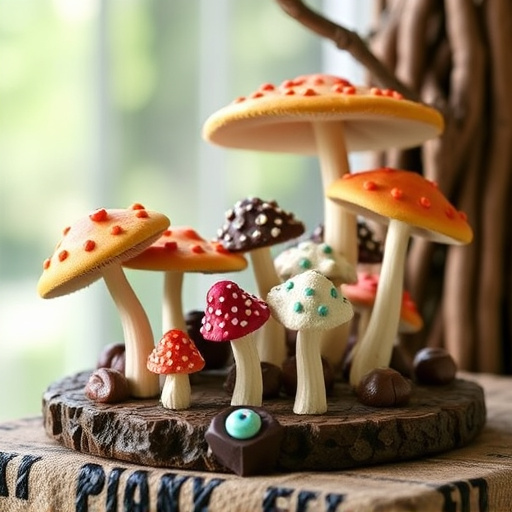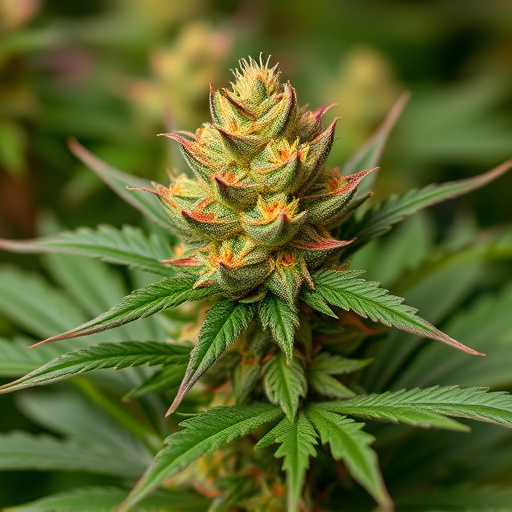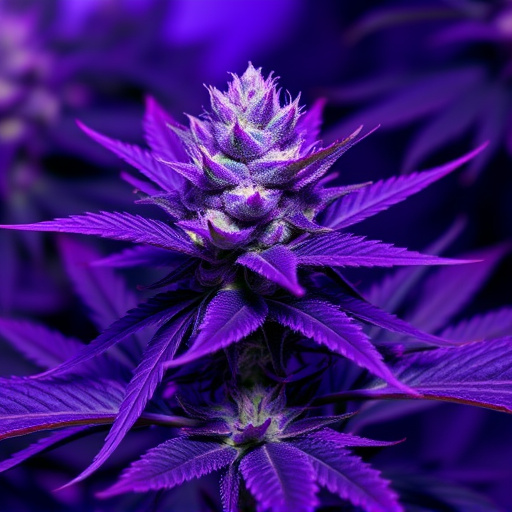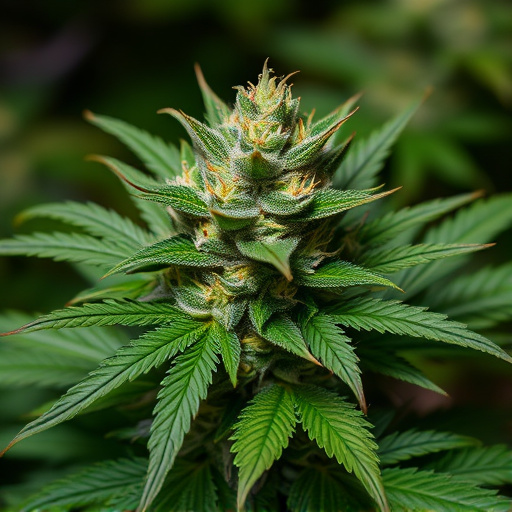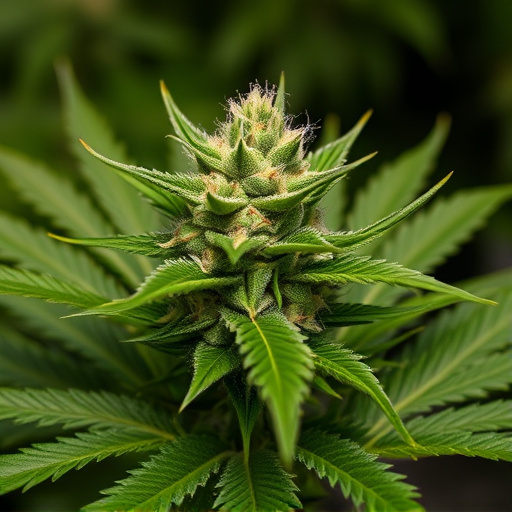Cannabis flowers' natural maturation process transforms their green chlorophyll into vibrant hues, indicating the production of potent cannabinoids like THC and CBD. Colors, influenced by genetics, environment, and nutrients (carotenoids & anthocyanins), signal harvest readiness and enhance user experiences. Bright hues like deep purple or orange reflect higher THC concentrations, making visual assessment crucial in legal markets where appearance impacts consumer choices and expectations.
Cannabis flowers, known for their diverse colors, undergo a fascinating transformation as they mature. This article explores the science behind cannabis flower color change, delving into the natural process of cannabinoid production and pigmentation. We’ll uncover how environmental factors play a role in this metamorphosis, particularly light and temperature. Additionally, we’ll discuss the impact of color variation on the perceived quality and effects of potent cannabis strains, shedding light on why some varieties command higher prices in the market.
- The Natural Process of Cannabinoid Production and Pigmentation
- Environmental Factors Influencing Color Change
- How Color Variation Affects Potent Cannabis Strains' Perceived Quality and Effects
The Natural Process of Cannabinoid Production and Pigmentation
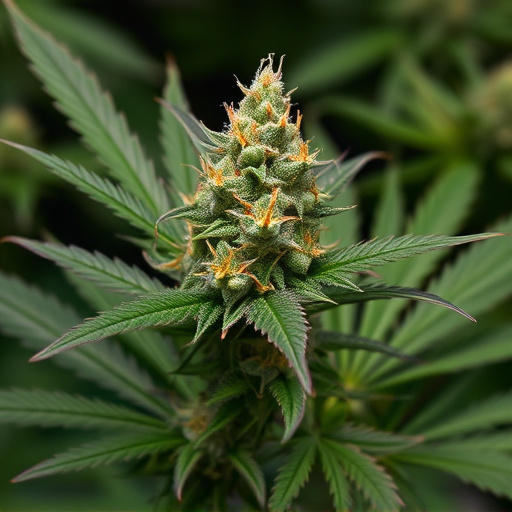
Cannabis plants undergo a complex natural process as they mature, leading up to the transformation of their flowers from green to vibrant hues. This change is not merely cosmetic; it signifies the production and accumulation of cannabinoids, which are responsible for the plant’s unique properties. As cannabis flowers develop, they begin to synthesize compounds like THC (tetrahydrocannabinol) and CBD (cannabidiol), both of which contribute to the final color and overall potency of the strain.
Pigmentation in cannabis is influenced by various factors, including genetic makeup, environmental conditions, and nutrient availability. The green color initially comes from chlorophyll, essential for photosynthesis. However, as the flowers age, chlorophyll breaks down, revealing other pigments like carotenoids and anthocyanins. Carotenoids produce shades of yellow and orange, while anthocyanins add reds and purples, resulting in the breathtaking array of colors observed in potent cannabis strains. This natural process not only contributes to the visual appeal but also indicates the plant’s readiness for harvest, ensuring that consumers enjoy the full spectrum of flavors and effects.
Environmental Factors Influencing Color Change

The color transformation in cannabis flowers is a fascinating process influenced by various environmental factors. As cannabis plants mature, the delicate balance of hormones and pigments within the buds initiates this visual metamorphosis. One significant contributor is light exposure; specific wavelengths can trigger the production of different pigments, leading to vibrant hues like deep purples or intense yellows.
Temperature also plays a crucial role in determining color intensity. Cooler temperatures during the flowering stage often result in richer, more saturated colors in potent cannabis strains. This is why outdoor cannabis gardens may produce flowers with varying colors depending on the local climate and seasonal changes. Additionally, nutrient availability and pH levels can subtly affect pigment expression, ensuring each bud tells a unique visual story.
How Color Variation Affects Potent Cannabis Strains' Perceived Quality and Effects
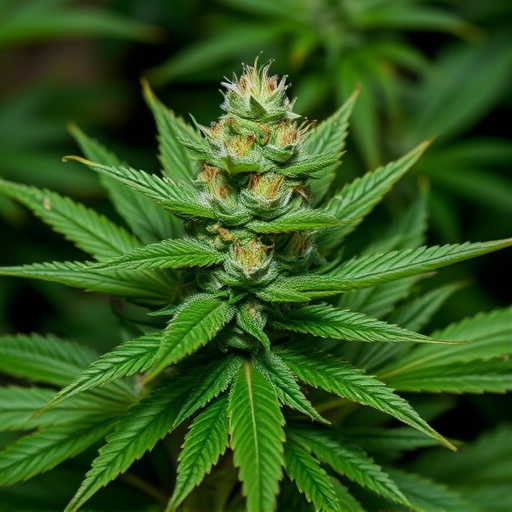
The color variation in cannabis flowers is more than just an aesthetic phenomenon; it plays a significant role in how potent cannabis strains are perceived and experienced. Different colors often indicate varying levels of cannabinoid concentration, particularly THC (tetrahydrocannabinol), which is responsible for the plant’s psychoactive effects. Bright, vibrant hues like deep purple or intense orange suggest higher THC levels, instantly enhancing the perceived quality and potential effects of a strain. This visual cue has become increasingly important in the legal cannabis market, where consumers often base their choices on appearance alone before purchasing.
Furthermore, specific colors can evoke distinct sensory experiences. For instance, shades of blue are commonly associated with calming and relaxing effects, while red-tinged flowers might indicate potent, energizing properties. These associations influence how users anticipate and interpret their experience, adding another layer to the complex relationship between cannabis color, potency, and user expectations.
The color transformation of cannabis flowers is a fascinating aspect of their development, influenced by both internal biochemical processes and external environmental cues. Understanding these changes, from the natural production of cannabinoids and pigments to the impact of varying conditions, is essential in recognizing how these factors can affect the perceived quality and effects of potent cannabis strains. By appreciating the intricate relationship between color and cannabinoid profiles, cultivators and consumers alike can gain valuable insights into the diverse experiences offered by different cannabis varieties.

